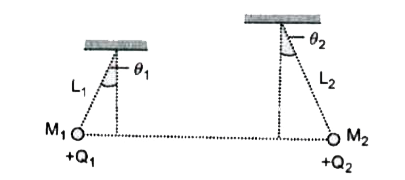Formation of covalent bonds in compounds exhibits :Solution in Kannada
wave nature of electron
particle nature of electron
both wave and particle nature of electron
none of these.
The correct Answer is:A
Covalent bond formation is explained by orbital theory using wave concept.
Topper's Solved these Questions
- ELECTRONS & PHOTONSBOOK - MODERN PUBLICATIONCHAPTER - ELECTRONS & PHOTONSEXERCISE - MULTIPLE CHOICE QUESTIONS (LEVEL-II)
63 Videos
- ELECTRONS & PHOTONSBOOK - MODERN PUBLICATIONCHAPTER - ELECTRONS & PHOTONSEXERCISE - MULTIPLE CHOICE QUESTIONS (LEVEL-III)
9 Videos
- ELECTROMAGNETIC WAVESBOOK - MODERN PUBLICATIONCHAPTER - ELECTROMAGNETIC WAVESEXERCISE - RECENT COMPETITIVE QUESTIONS
4 Videos
- ELECTROSTATICSBOOK - MODERN PUBLICATIONCHAPTER - ELECTROSTATICSEXERCISE - RECENT COMPETITIVE QUESTIONS
39 Videos
Similar Questions
Maximum frequency of the photon produced by the union of a proton and a antiproton is (given : mp=1.67×10−27kg):
View SolutionEnergy required for the electron excitation in Li++ from the first to the third Bohr orbit is :
View SolutionThe speed of electromagnetic wave in vacuum depends upon the source of radiation
View SolutionTwo small spheres of masses M1andM2 are suspended by weightless insulating threads of lengths L1andL2 The spheres carry charges Q1andq2 respectively . The spheres are suspended such that they are in level with one another and the threads are inclined to the vertical at angles of θ1andθ2 as shown . Which one o fthe following conditions , if θ1=θ2 ?

View SolutionAssertion. Boron always forms covalent compounds. Reason. The small size of B^(3+) favours formation of covalent bonds.
View Solutionदृढ तथा दैशिक सहसंयोजी आबन्धों की उपस्थिति के कारण कार्बनिक यौगिक समावयवता दर्शाते हैं।
View SolutionCH3−Cl में आबंध निर्माण का उपयोग कर उपयोग कर सहसंयोजक आबंध कि प्रकृति समझाएँ।
View SolutionGive the factors favouring formation of covalant bond.
View Solutionसहसंयोजी बन्ध का निर्माण एक उदाहरण के द्वारा स्पष्ट कीजिए।
View SolutionExplain the formation of a covalent bond. State two factors which influence the formation of a covalent bond.
View SolutionFor the formation of covalent bond, the difference in the value of electronegativities should be
View SolutionBonding in Carbon|Covalent Compounds
View SolutionFormation of Covalent Compounds
View Solutionसहसंयोजी बंध निर्माण में,
View SolutionFormation of Covalent Compounds
View SolutionIn the formation of covalent bond
View Solution
